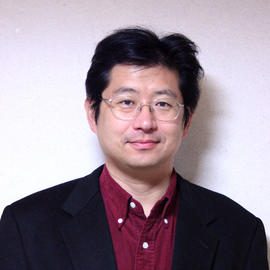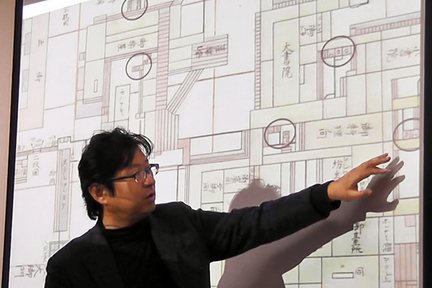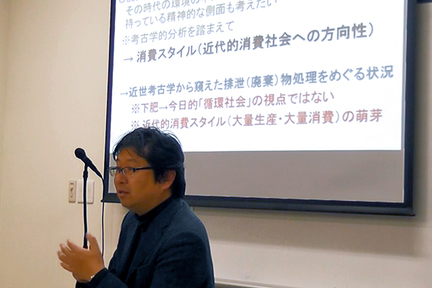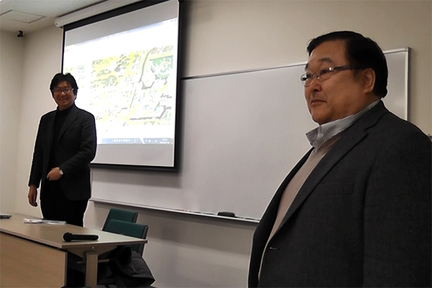I Want to Learn How to Think Beyond Academic Disciplines
Vol.12 2015.01.14 Hideki HORIUCHI
System of Abandonment and Reuse in the Modern City Edo
Modern times have been recognized as the era of ecology. The reuse of excreta and circulation of farming products in the city of Edo is still regarded as a target in the context of labour saving, saving energy and saving the resources of today. However, the excavation of Edo ruins reveal different aspects of this image. The peculiarity of the city of Edo and the information held in common affects this prejudice.
In this lecture, I am going to talk about the archaeological specimens in the excavation of the Edo ruins which are concerned with excretion and abandonment and would like to consider a conduct of reuse and non-reuse.
- Instructor
-

- Hideki HORIUCHI
- Associate Professor at the Archaeological Research Unit, the University of Tokyo (Doctor of Literature) Born 1961. His speciality is archaeology (modern archaeology, circulation and consumption of ceramics). He has been participating in the excavation of the ruins on the Hongo campus of the University of Tokyo since 1984. He mainly has studied the ruins of the former residence of the domain of Kaga Maeda and the ceramics which were excavated from there. His literary works include: Kinsei tōjiki no shōhi ni kansuru kōkogaku teki kenkyū (An archaeological study on the consumption of the Japanese early-modern ceramics) (PhD thesis, 2009), Kinsei toshi edo ni okeru bōeki tōjiki no shōhi : Juyō to sono haikei (The consumption of the trade ceramics at the modern city of Edo: Their demand and background), Umi no michi to kōkogaku (A path of sea and archaeology) (Koshi shoin, 2010) and ‘Toshi Edo ni okeru shōhi kōi to jōhō (The act of consumption and the information in the city of Edo)’, Edo jidai no meisanhin to shōhyō (Well-known products and the brands in the Edo era) (Yoshikawa kōbunkan).
- Resume Download
comments(最新2件 / 7)
- 2015年01月15日 12:54 reply
日頃部活で、本郷キャンパスを利用しているので、加賀藩邸の地図を見ながらキャンパスの様子を想像できて面白かったです。恥ずかしながら、赤門が加賀藩邸の名残であることも、かつて藩邸であったことも知りませんでした。
また考古学についても詳しいことは知らなかったのですが、便所のあり方だけで、階層性が読み取れたり鉛の検出により女性の便だと見分けたりなど、あらゆる点で初めて知ることばかりで楽しくお話を聞けました。
- 2015年01月19日 09:53 reply
今回は近代歴史研究における発掘調査の有益性を学ぶことができた。さらに題材が東大本郷キャンパスということで、非常に身近なものだったことで興味を惹かれた。普段は本郷キャンパスを使わないが、自分の知っている話もいくつかあったので、理解の助けとなった。
近代歴史研究では文書研究が主体であるが、局所的な研究にはむしろ発掘調査の方が有益だという話は初めてだったのでとても勉強になった。
排泄と人間の生活は密接に関わりあっているので、当時の生活も知ることができたのはとても良かったと思う。
- 2015年01月20日 08:56 reply
普段本郷キャンパスを利用しませんが、赤門の由来など旧加賀藩邸のことを知ることができ興味深かったです。また、江戸と京都での違いなど同じ江戸時代でも便所の在り方が違うということは意外でした。江戸時代は、漠然と「循環型社会」だという認識しかありませんでしたが、詳しく学ぶことができました。
- 2015年01月20日 22:24 reply
現代の大量生産・大量消費社会の原型のようなものが江戸時代の出土品から見ることができ、興味深かった。生産量が増加したことでモノをモノだと思わないようになったというのは、昔の人がモノを大事にしていたのは単にモノが生産できなかったからだと考えると、廃棄物量の増加と人々のモラルの低下を結びつけて考えるべきではないのかなと思った。
- 2015年01月21日 16:30 reply
江戸時代の便所の配列が非常に興味深かった。人間の生活や階級、性差に確かな根拠のある配置や、便所が人間の生活とかなり近いところに位置している点から、歴史を越えて、排泄を行う施設が生活の中での確かな一部分であるのだということを再認識させられた。
- 2015年01月23日 15:12 reply
近代歴史において発掘調査が行われ、それが効果的であることがそもそも驚きであった。
今日では、江戸時代の社会は循環型社会の理想的モデルとして提示されることが多い。しかし、循環型社会は消費型社会への問題意識をベースとしてはじめて成立するもので、江戸時代でも意識的な循環は行われず、消費型社会の精神性を内包しているというのが新鮮だった。
Post a Comment
- Other Lessons



理想的な循環型社会としての江戸、という見方が崩されうることは驚きでした。また大量生産大量消費社会の萌芽との見方もあるときき、そもそも「省エネ意識」「もったいない精神」がなんたるものなのかも考えさせられました。